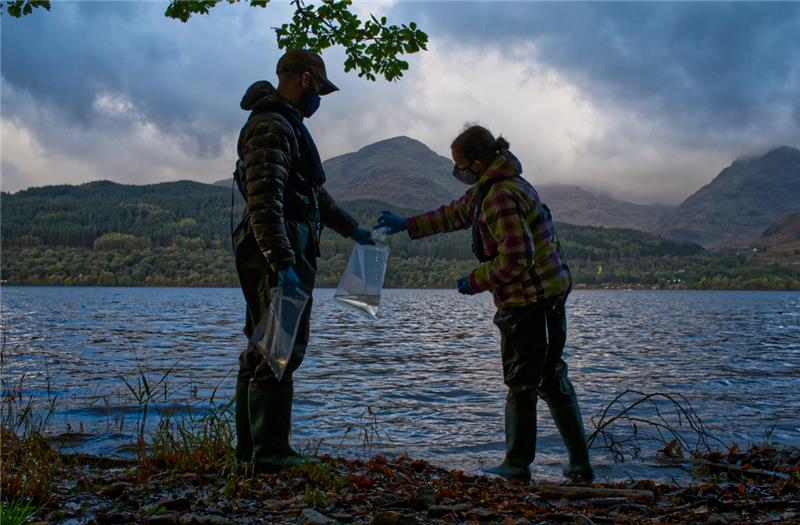What is eDNA, and what does it mean for the future of bioethics?
Did you know that we are constantly shedding bits of DNA all the time?

A few minutes every morning is all you need.
Stay up to date on the world's Headlines and Human Stories. It's fun, it's factual, it's fluff-free.
The backstory: DNA, or deoxyribonucleic acid, is a polymer that contains genetic information about an organism. Human DNA can be collected from things like blood, spit, hair or even skin cells. It’s used for things like identifying family histories, medical issues or even missing persons and suspected criminals. But did you know that we are constantly shedding bits of DNA all the time?
Environmental DNA (eDNA) is the genetic material that all living things leave behind wherever they go. This stuff is everywhere, and researchers have been using eDNA for a while to detect invasive species, track wildlife and find species thought to be extinct. It’s also useful when it comes to monitoring the spread of pathogens. Normally, human DNA found in these samples is really in the way of the data researchers are after and not something they are focused on. But, it turns out, there’s a lot more of it around than previously thought.
More recently: Recently, researchers at the University of Florida were working on an eDNA project to monitor endangered sea turtle populations with UF Sea Turtle Hospitals. But, while looking for relevant turtle eDNA, they kept stumbling on tons of human genetic material in the water, sand and even the air. Some of the human eDNA they found was surprisingly good quality, and they were able to sequence it. The material could provide information on the ancestries and health of those local communities and even get as specific as narrowing down mutations of people in the area prone to certain diseases. This was an unexpectedly cool find, but it also brought up a lot of ethical questions.
The development: The results that were collected from all of this genetic data suggest that eDNA could become a real source of viable genetic information about people. Just with the technology we currently have, meaningful genetic sequences could be found and used from these samples. But what about when that tech advances even more, and we understand more about genetics?
These researchers say eDNA could be used in fields like public health, wildlife conservation, archeology and criminal forensics. But it also brings up some questions about genetic privacy. For example, these DNA collecting techniques could possibly be used by law enforcement, which is concerning since police have adopted less reliable or non-standard tools to identify suspects in the past. It could also be used for public surveillance without consent and the “commodification of genomic data,” meaning genetic info that people haven’t consented to release could be bought and sold. It opens up a whole can of worms in bioethics, especially for indigenous and minority populations.
On the one hand, some experts point out that this eDNA currently won’t meet law enforcement standards, and the tech and collection methods aren’t quite up to snuff to be used super specifically. But, other experts say this is a turning point where we need to examine regulation and legal definitions of DNA and how it can be used.
Key comments:
"Any time we make a technological advance, there are beneficial things that the technology can be used for and concerning things that the technology can be used for," said University of Florida zoologist David Duffy, who worked on the sea turtle project. "These are issues we are trying to raise early so policymakers and society have time to develop regulations."
“This gives a powerful new tool to authorities,” said Dr. Anna Lewis, a Harvard researcher who studies the ethical, legal and social implications of genetics research. “There’s internationally plenty of reason, I think, to be concerned.”
“Given the power of eDNA approaches, we did expect to recover DNA from many species, including some human DNA, but we originally expected to have far more human eDNA recovered from human settings, like the turtle tanks at our hospital, rather than from samples taken from the environments,” said Jessica Farrell, a sea turtle expert at UF and an author of the study. “We found that there was actually far more human eDNA in the environment, especially nearby rivers, rather than in the tanks at our facility, even though our turtle patients require a lot of hands-on care. This was our first clue that the level of human eDNA recoverable from environmental samples is far higher than we expected.”
“DNA tracks to your extended relatives, tracks forward in time to your children, tracks backward in time to your ancestors,” said Erin Murphy, a law professor at the New York University School of Law. “In the future, who knows what DNA will tell us about people or how it might be used?”




Comments ()